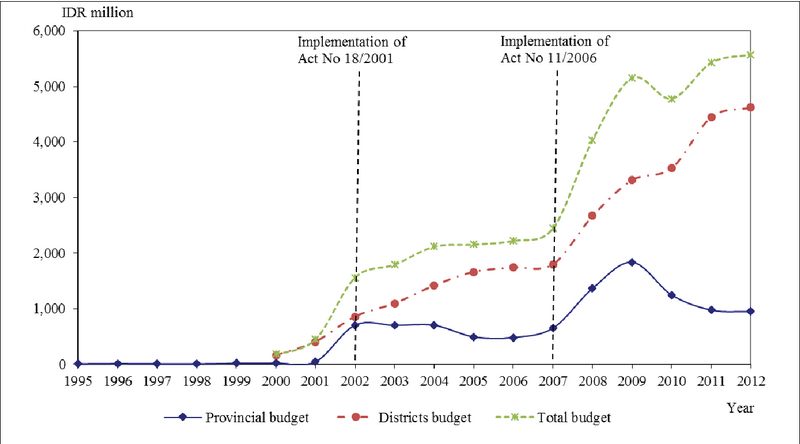Fixed Investments and Human Investments for Economic Growth – A case study of Aceh Province - Indonesia
DOI:
https://doi.org/10.18502/kss.v1i1.442Abstract
Under endogenous growth theory, education as part of human investments has become one of the key drivers of economic growth. Many recent studies have put an increasingly strong emphasis on human investments as opposed to physical fixed investments. More attention has been paid to find evidence of whether government intervention through education spending has a positive contribution to educational outcomes, labor market outcomes and hence economic growth. This study is aimed at making a comparative analysis of whether human investments have a greater impact on the economic growth than fixed investments, by taking Aceh province, Indonesia, as a case. A static linear panel data model was utilized to gauge the impact of the two types of investments on economic growth. The panel data from all 23 districts within Aceh Province from 2008 to 2011 were collected. Based on statistical testing for model selection, random effects model was selected as the appropriate approach to explaining the relationship among the following variables; fixed investments, education spending and economic growth. The results of the study have shown that both types of investments have statistically positive impacts on the economic growth of a regional economy. Moreover, fixed investments have well greater impact than education spending on economic growth. Therefore, subnational governments, particularly those with special fund allocation to education, should optimally manage the use of their education funds in a more effective way in order to achieve a certain targeted rate of economic growth.
Keywords: education spending, economic growth, panel data
References
M. A. Babatunde and R. A. Adefabi, Long Run Relationship between Education and Economic Growth in Nigeria: Evidence from the Johansen’s Cointegration Approach, Regional Conference on Education in West Africa: Constraints and Opportunities Dakar, (2005).
R. J. Barro and J. W. Lee, International comparisons of educational attainment, J Monet Econ, 32, 363–394, (1993).
J. Benhabib and M. Spiegel, The Role of Human Capital in Economic Development: Evidence from Aggregate Cross-Country Data, J Monet Econ, 34, 143–173, (1994).
M. R. Gupta and B. Chakraborty, in Human Capital Accumulation and Endogenous Growth in a Dual Economy, 2004.
R. Lucas Jr, On the Mechanisms of Economic Development, J Monet Econ, 22, 3–42, (1988).
L. J. Loening, ‘The Impact of Education on Economic Growth in Guatemala’, Ibero- America Institute for Economic Research (IAI), Geor-August-Universitat Gottingen, 2002.
Y. Mekdad, A. Dahmani, and M. Louaj, Public Spending on Education and Economic Growth in Algeria, Int J Bus Manage, II, 55–70, (2014).
C. Papageorgiou, Distinguishing Between the Effects of Primary and Post-primary Education on Economic Growth, Rev Dev Econ, 7, 622–635, (2003).
P. E. Petrakis and D. Stamatakis, Growth and educational levels: a comparative analysis, Econ Educ Rev, 21, 513–521, (2002).
in Economics of Education: Research and Studies, G. Psacharopoulos, Ed., p. 1, Pergamon Press, New York, 1987.
S. Self and R. Grabowski, Does education at all levels cause growth? India, a case study, Econ Educ Rev, 23, 47–55, (2004).
T. W. Schultz, Investment in Human Capital, Am Econ Rev, 51, 1–17, (1961).

